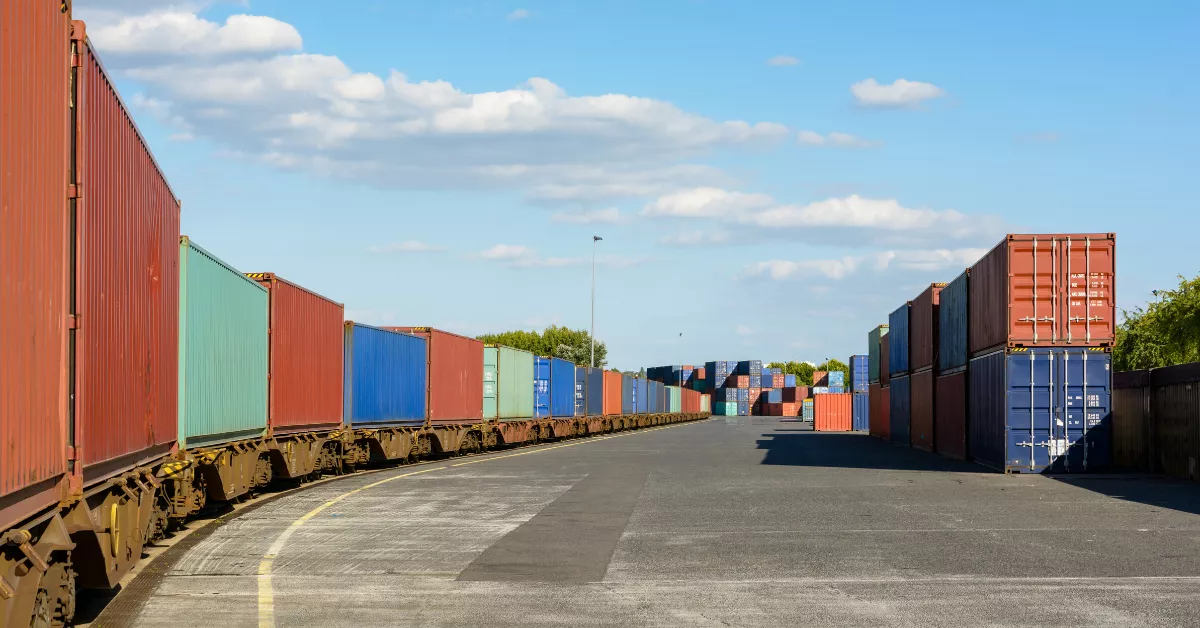The COVID 19 pandemic has triggered a recent cratering in rail intermodal moves, particularly on the international container cargo portion of that business.
These shifts are notable and historic. Let’s start with some perspective. For decades, overall rail intermodal volume growth – both domestic and international cargo – outpaced truck shipment increases. Then in 2018, as freight strengthened along with the economy, over-the-road volume surged and outpaced domestic intermodal volume growth. As more capacity flowed into the domestic market, rates fell. Railroads didn’t cut prices to boost domestic intermodal volume and lost market share. Meanwhile, international rail intermodal cargo held steady, despite wrangling with China about tariffs.
COVID 19 changed that pattern. International rail intermodal cargo fell 11.3 percent in the first quarter of 2020 as the pandemic spread around the globe, and 18.7 percent in March alone, according to the Intermodal Association of North America (IANA). Analysts expect an even greater second quarter decline.

Meanwhile, first quarter domestic rail intermodal shipments fell 1.8 percent as measured by the IANA. Truck freight statistics from American Trucking Associations showed a 2.4 percent rise in motor carrier cargo, while the DAT Truckload Volume Index showed strong year-over-year increases in spot volumes in January, February and March.
The combined international and domestic shipment decline was 6.7 percent in the first quarter at IANA, which doesn’t provide monthly statistics. The Association of American Railroads, however, reported a 17 percent decline in all April intermodal shipments. Some railroad conference call commentary hinted that the second quarter total decline in intermodal traffic could be even greater.
Intermodal could suffer even more for this reason. After OTR volumes and rates declined sharply in April, it could be very attractive for fleets that have used intermodal prior to COVID 19 to run more freight at low highway rates to keep drivers working. It’s hard to see how fleets would want to pay more to move freight long-distance by rail if intermodal rates are higher.
What to watch going forward
There may be a few potentially encouraging nuggets to help rail intermodal, despite the recent developments.
If some drivers can’t make a living and park their trucks due to low demand, OTR carriers and brokers might have to use more intermodal, with its inherent advantage of putting hundreds of boxes on a single train, regardless of rail rate policies.
Driver health is a wild card. The U.S. has been extraordinarily fortunate that freight has kept flowing, though imperfectly, because there doesn’t seem to have been a severe COVID-19 outbreak among truckers, who have kept working either out of patriotism, financial necessity or another reason. What happens if COVID-19 sharply reduces driver supply? Intermodal could fill such a void if something that terrible occurs.
Also, seasonal demand is starting to pick up finally, which might help intermodal a bit. A sharp spike in freight demand greatly helps intermodal, which has proved its effectiveness as a surge capacity provider. In addition, rail service is the best it has been in years, according to heavyweight users such as J.B. Hunt. Improved rail reliability could go a long way to please customers, given past service quality problems.
Will rail intermodal fare better later this year? That’s tough to predict given the current climate. One thing is certain – who would have thought 366 days ago that we’d be in this kind of a terrible fix today?

